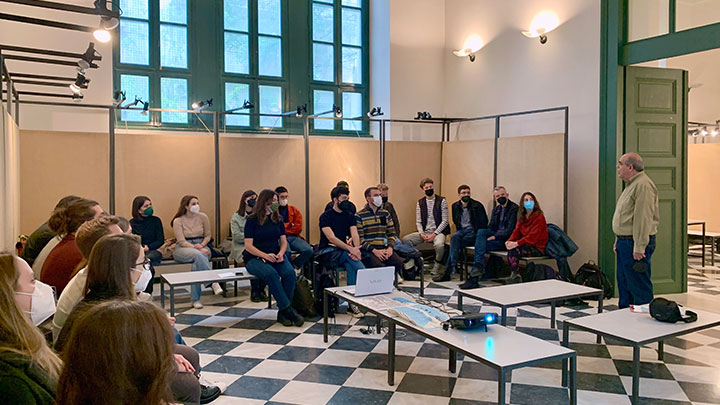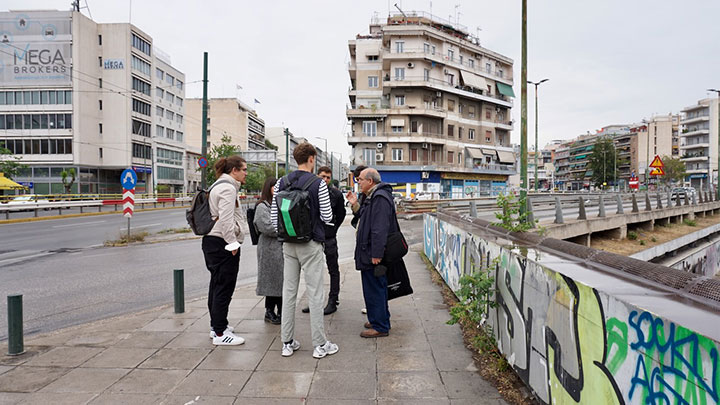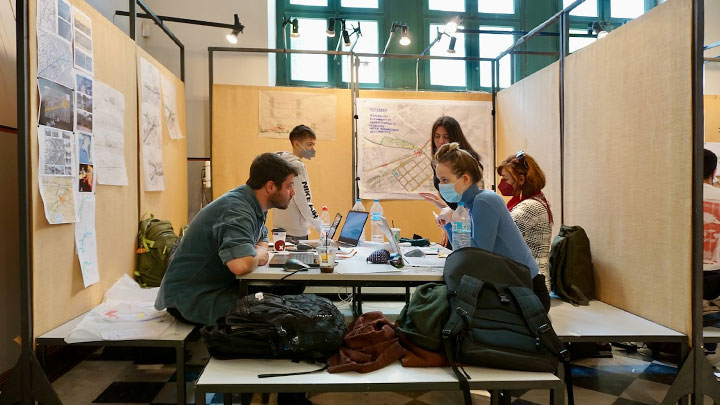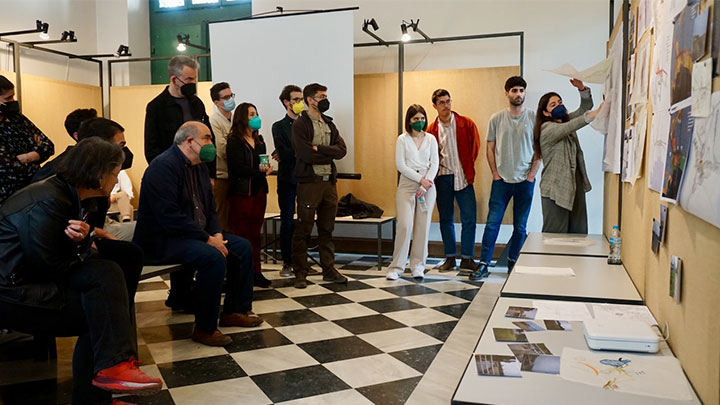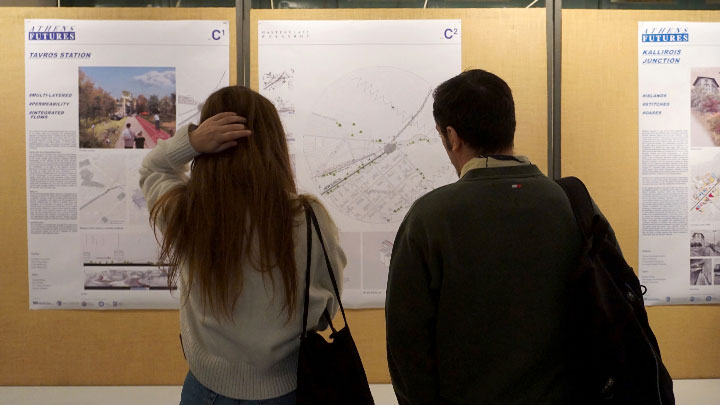Athens Futures
International masterclass workshop
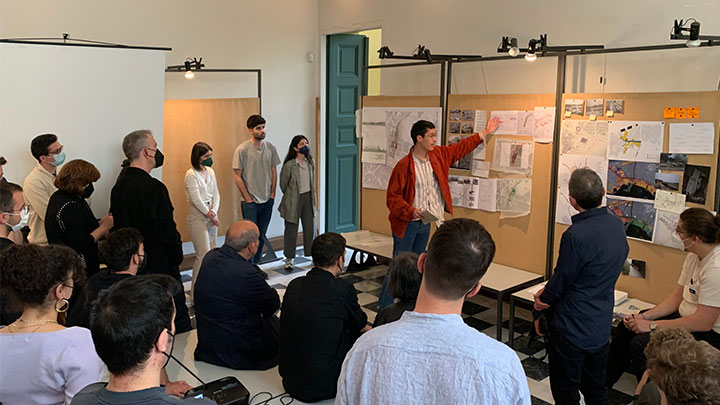
Students from five different schools of architecture joined forces to discuss current urban issues, raise questions and develop visions for Athens and its metropolitan area. The workshop was conceived as a fast-track design project, in which students developed provocative ideas and tested concepts for sustainable urban transformations for six different sites.
25 students and 10 tutors from the Technical University of Munich - TUM, National Technical University of Athens – NTUA, Aristotle University of Thessaloniki - AUTH, University of Patras - UPAT and Technical University of Chania, Crete – TUC took part in the international workshop Athens Futures. The workshop was organised in a masterclass-like style, whereby students and teaching staff were working together as one team, with the aim to create a set of visions, ideas and small manifestos about the futures of Athens.
The questions raised included: Which new ways of negotiating public and private spaces do we need to address current and future problems? How can we repair, re-conceive, reconnect urban territories? How set free and exploit new potentials? Which are the stakeholders that can actively contribute in urban regeneration processes? How can we use the potential of urban voids to promote urban renewal?
The workshop started on 2nd of May with an introduction and site visits, during which the teams explored their study areas and the wider context, made observations, and raised first questions. The teams presented their concepts in an intermediate presentation, before they developed their ideas into strategic plans and visions. They had five days to elaborate and represent their ideas. The sites included Alexandras Avenue, Kypseli Quarter, Tavros Station, Kallirrois Junction, Plato’s Academy, and the edge of Piraeus. The sites are all located in areas outside of Athens’ core triangle and its adjacent neighbourhoods, which have been in a prolonged state of urban transformation over the last decades. The sites include elements of the generic parts of the city, which can be found throughout the urban grid in the Attika Basin, as well as specific elements which come with a series of distinct characteristics and problems. This facilitated the development of tools and design methods both for the generic and the specific parts of them. The circle, as a shape, indicates that the area is open to further interpretation and gives the teams a flexibility to choose their specific interventions. The different proposals could be seen as forming a methodological toolbox for processes of urban transformation and the development of more sustainable cities.
Participating students:
Eleftheria Arvanitaki
Georgios Avgerinou
Alexis Chalidis
Athena Charalampopoulou
Nikos Chintzios
Georgia Daferera
Iason-Alvertos Degleris
Iason Frangos
Nikos Gkaniatsas
Laura Hoffmann
Robin Host
Rene Kusnawijaya
Philip-Maximilian Maier
Eleni Mantzoufa
Katerina Maragoudaki
Katerina Mavromati
Rosa Modersohn
Haris Neokleous
Ioanna Nithaurianaki
Leonidas Oikonomis
Athanasia Polymerou
Alesia Prondi
Nikos Spiliotopoulos
Efi Smyrnaiou
Leo Thumann
Ioannis Tsekouras
Masterclass tutors:
Tilemachos Andrianopoulos
Panos Dragonas
Panita Karamanea
Norbert Kling
Christos Kritikos
Mark Michaeli
Alkmini Paka
Tasos Roidis
Panayotis Tournikiotis
Athina Vitopoulou
